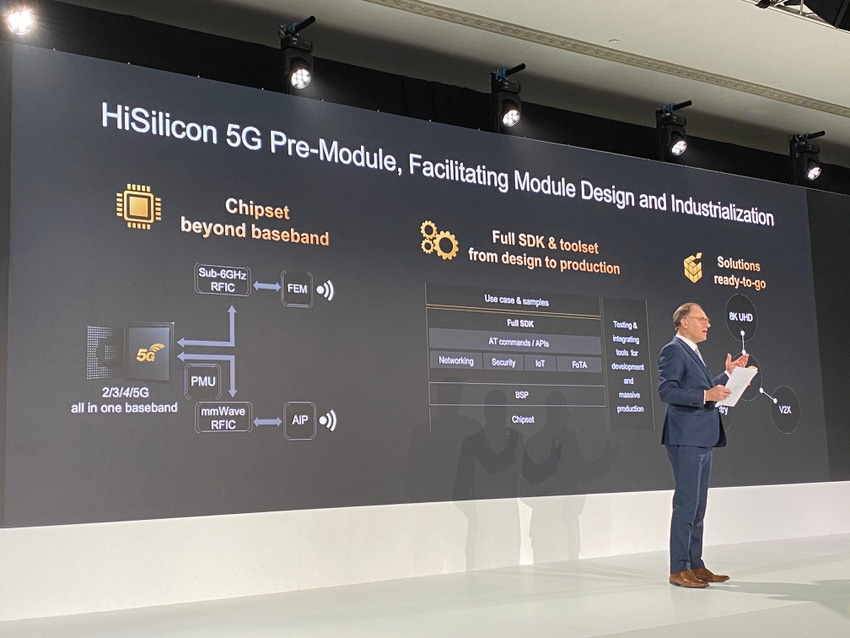Huawei has released a string of new products at its MWC replacement event in London and claims to be number one in every field.
February 21, 2020

Huawei released a string of new products at its MWC replacement event in London and claimed to be number one in every field.
At its product and solution launch event, dubbed “5G, Bring New Value”, Huawei unveiled a number of new products including a new chipset, an updated 5G core, new solutions for private networks and optical transmission, a new IP router, and a new software suite.
These products were launched one by one after Ryan Ding, Huawei’s President of Carrier Business Group, already unveiled the 64T64R Massive MIMO 5G base station during his keynote, when he reiterated the claim he made a year ago that Huawei enjoyed 18 months’ leadership over its competitors. When asked to substantiate the claim in a subsequent analyst briefing, Huawei simply said its leadership is in all technologies.
Similar claims, if not down to the specific number of months of its leadership, were repeated in the other product launches. After the new flagship base station and other 5G solutions (Blade AAU, 5G X-Haul for higher network slicing precision, a new optical module for ultra-broadband transmission) were introduced in more details by Yang Chaobin, Huawei’s 5G Product Line President, Henk Koopmans (pictured), CEO of Huawei’s R&D UK, took the stage to unveil the new 5G chipset, called 5G pre-module. It has a 2/3/4/5G-in-one baseband that will work on frequency bands from sub-6GHz to mmWave.
Huawei stressed the reference design that comes with it which will make it easier for Huawei’s customers to onboard the platform and design and make their products. What is puzzling is Koopmans’s claim that this chipset, on a 7nm process, is the world’s most advanced design, and is the world’s first to support both standalone (SA) and non-standalone (NSA) 5G modes, clearly undeterred by the fact that the new Qualcomm 5G chipset launched two days earlier does exactly that, and is designed on a 5nm process.
Huawei’s new private network solutions, called HiCampus, include LAN switch and fibre. It focuses on providing its customers with full wireless connectivity, full fibre, and full AI. The AI capability is highlighted in the context of fast detection of root causes for network errors. Huawei claims that over 85% of its customers’ network errors can be automatically resolved.
Other new products introduced at the event include Huawei’s new 5G core, with highlight on what it calls “deterministic networking” (including E2E network slicing, service & topology awareness, and resource orchestration); intelligent optical network solutions, called OptiX, to deliver enhanced experience for home use (especially supported by embedded AI) and private networks (with passive optical LAN); NetEngine 8000, Huawei’s new IP router for data communications which the company claims to be the world’s first to be able to deliver service level agreement (SLA) assurance. Huawei’s new billing system, called Huawei 5G CBS R20, was the final launch at the event. The company claimed that the billing system has achieved the first live 5G SA implementation, with STC Kuwait.
Another key theme that threads all the product launches at the event was Huawei’s stress on the “green” advantage of its new products, with different percentages of energy consumption reduction attached to the feature introductions. This is assumed to not only demonstrate the power consumption efficiency that can save OPEX for its customers, but also echo the message from the GSMA representative at the event that telecoms industry is the first sector to comply with the United Nations Sustainable Development Goals (SDGs).
About the Author(s)
You May Also Like








.png?width=300&auto=webp&quality=80&disable=upscale)


_1.jpg?width=300&auto=webp&quality=80&disable=upscale)


.png?width=800&auto=webp&quality=80&disable=upscale)